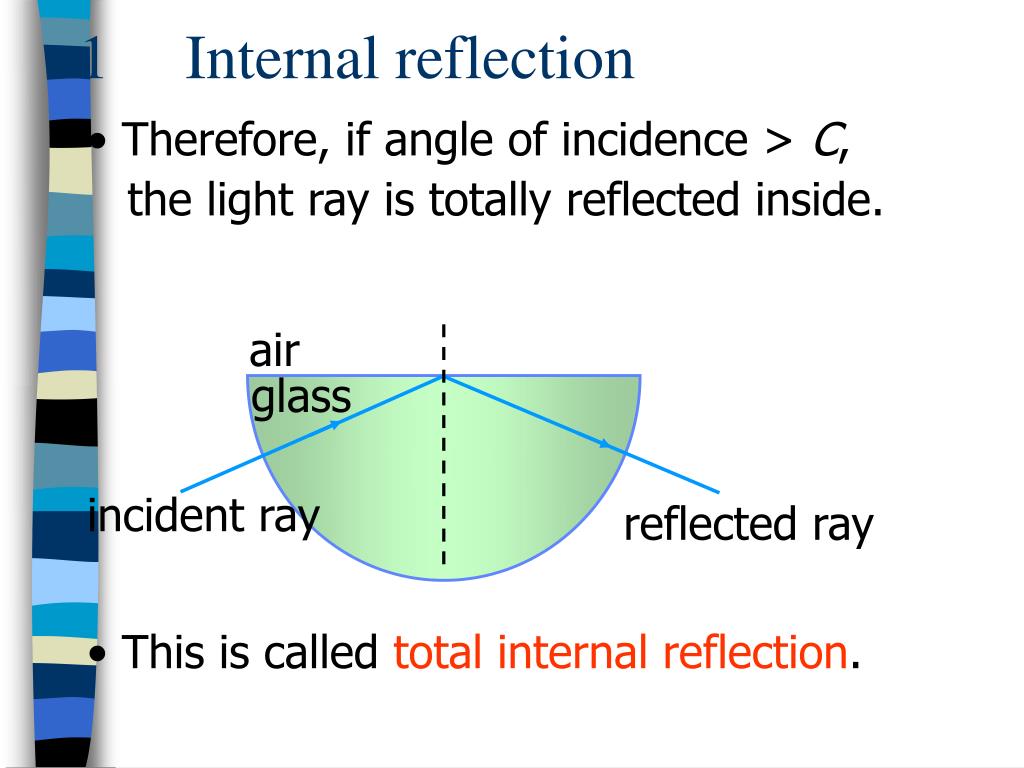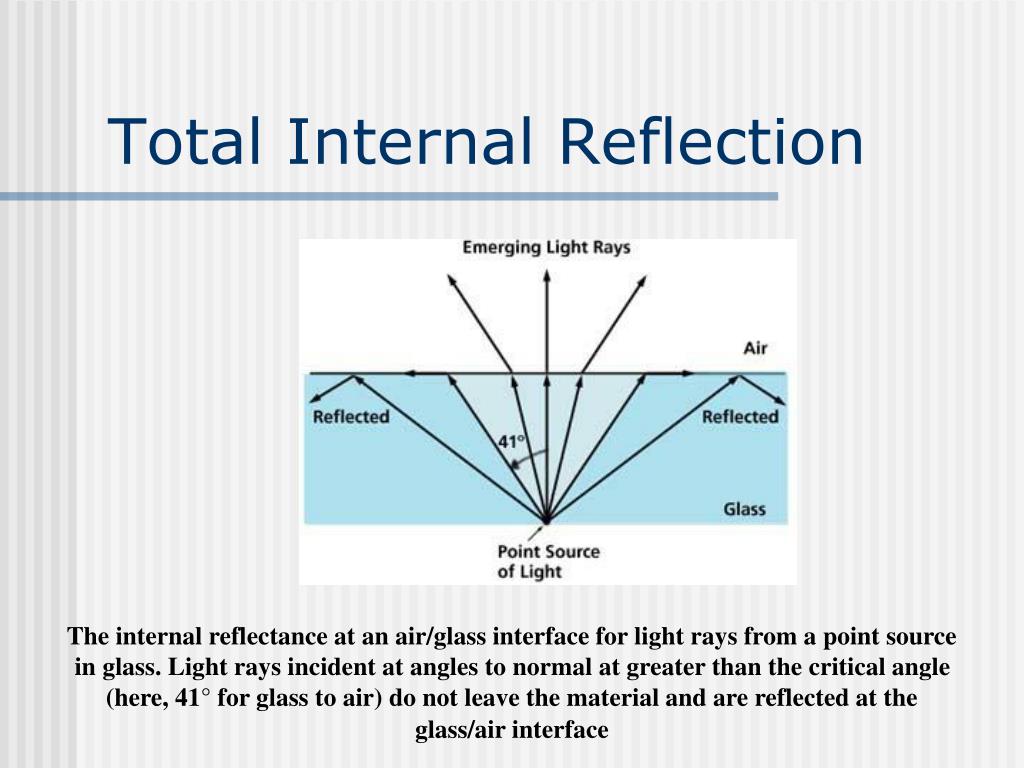

The angle of incidence is always greater than the critical angleįor TIR to place, the angle of incidence must be larger than the critical angle, but what exact value makes the incident angle larger? The critical angle for the water-air media is 48.6 degrees, hence the incident angle for this set-up must be greater than this value. Similarly, Total internal reflection will take place in the case of light travelling from water to air but not from the light moving from water to glass, as the Refractive Index of glass is greater than water. This happens due to a change of one medium to another medium. For example- The phenomenon will take place when the light is travelling from the water towards the air, it will not happen for vice versa. Light or rays that come towards or drive away from the normal have interfered. TIR will only take place when the light is travelling from an optically denser medium to an optically rarer medium. Let us take a detailed look at the conditions of TIR: The ray of light travels from denser medium to rarer medium In physics, total internal reflection (TIR) is the phenomenon in which waves arriving at the interface (boundary) from one medium to another (e.g., from water. Even minor changes in these conditions may not provide us with the desired result, hence, it is vital that these conditions are satisfied in order to receive actual results. B, A contact lens prevents TIR and allows visualization of the angle structures. Majorly, there are two conditions upon which the phenomenon of total internal reflection is based. A, Light from the anterior chamber angle undergoes total internal reflection (TIR) at the airtear-film interface. TIR only takes place when the angle of refraction is 90 degrees.įind out everything about Refection of Light !Ĭonditions for Total International Reflection It is the phenomenon behind your high-speed internet connectivity. This very angle of incident is called the critical angle. Critical Angle and Total Internal Reflection: Total Internal Reflection is the phenomenon that makes beautiful rainbows or diamonds dazzle with brilliant colours. At a certain angle of incidence, the incident ray of light gets refracted in such a way that it passes parallelly along the surface of the water. As the ray is travelling from a medium of a higher refractive index to a medium with a lower refractive index, the ray of light will move away from the normal. The ray of light will refract at the common point of the two media which is separating them.

In the above-mentioned picture, an incident ray of light is travelling from the medium of water to that of air. the ray of light continues to get reflected without getting refracted. In the given media like glass, water etc. Whenever a ray of light travels from an optically denser medium to an optically rarer medium, the phenomenon of Total Internal Reflection (TIR) takes place. This can control the timing of light pulses in the fibre and improves the quality of signal transmissions.Reflection of Light What is Total Internal Reflection (TIR)? By making an optical fibre’s structure from different types of glass, the light can be made to refract slightly as it travels along the fibre. This causes slight variations in the speed when light travels through the different types of glass. One might expect that for angles leading to total internal reflection, the solution would consist of an incident wave and a reflected wave, with no transmitted wave at all.

doctors can look at the inside of their patients using an endoscope - a long tube which guides light into the patient and then guides the reflected light back out to give an image.fibre broadband internet sends computer information coded as pulses of light along underground optical fibres.Usually made of glass, these are called optical fibres and they have many uses: Total internal reflection allows light to be contained and guided along very thin fibres. When the angle of incidence is greater than the critical angle the ray is reflected Uses of total internal reflection (TIR)


 0 kommentar(er)
0 kommentar(er)
